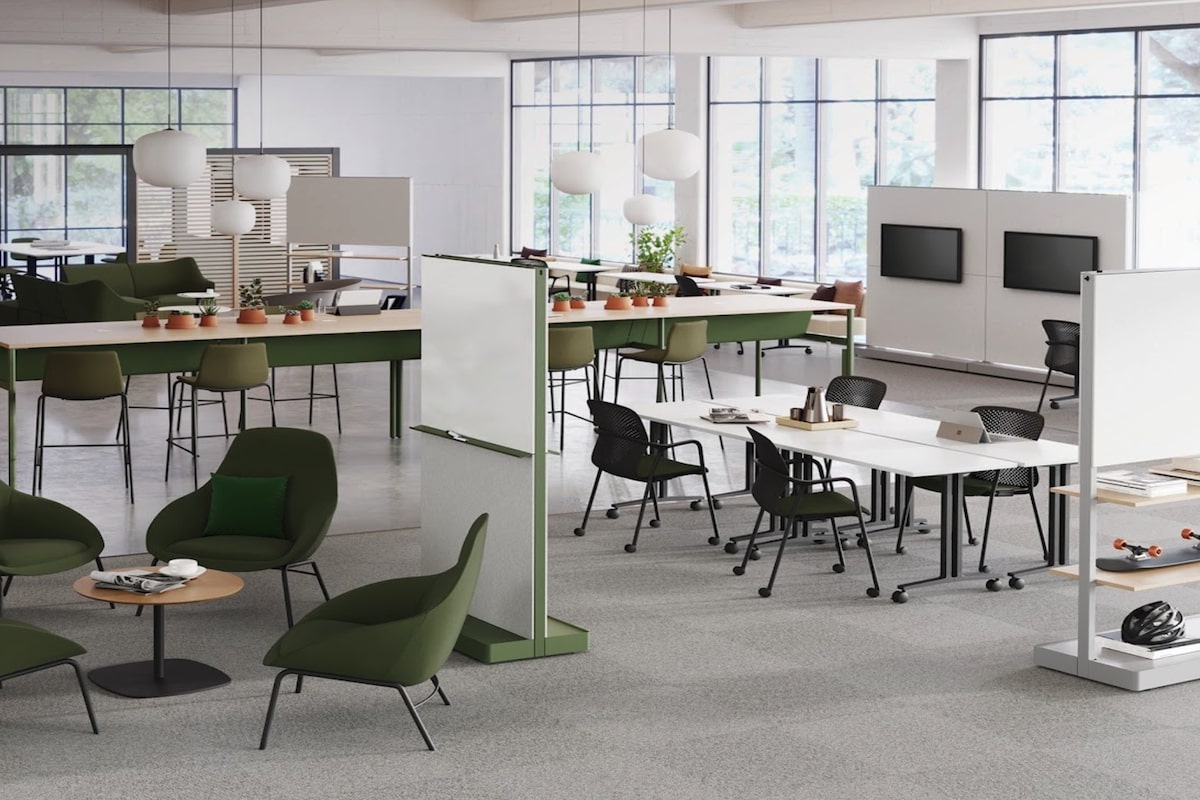If you’re like most people, you probably don’t think much about your office furniture. But if you take a little time to consider the ergonomics of your space, you can make some simple changes that will ensure you’re comfortable and productive all day long. Here are a few tips on how to use office furniture to create an optimal work environment.
First, take a look at your chair. Is it adjustable? If not, it’s time for an upgrade.
A good office chair should allow you to adjust the height, depth, and angle of the seat so that you can find a comfortable position. It’s also important to have lumbar support to protect your back from strain. Next, consider your desk.
Is it the right size for your needs? If you often find yourself working on paperwork or using a laptop, you may want a larger surface area so that you can spread out and avoid neck and shoulder pain. Alternatively, if most of your work is done on a computer screen, a smaller desk may be more appropriate.
- Before using any office furniture, be sure to read the manufacturer’s instructions carefully
- When setting up office furniture, be sure to follow the recommended configuration for the best ergonomic use
- Be sure to adjust office chairs and desks to the proper height for your own comfort and safety
- Always use caution when moving office furniture, as it can be heavy and cumbersome

Credit: www.samuelsgroup.net
What is the Use of Office Furniture?
Your office furniture is one of the most important investments you’ll make for your business. Not only does it play a role in employee productivity and satisfaction, but it also makes a statement about your company to clients and customers. When choosing office furniture, it’s important to strike the right balance between function and style.
Here are some things to keep in mind:
Function: Think about how your employees will be using the furniture on a daily basis. Do you need ergonomic chairs to support good posture and prevent back pain?
Will employees be sitting at desks all day or do they need comfortable lounge chairs for brainstorming sessions? Make sure you choose furniture that will help employees stay productive and comfortable throughout the workday.
Style: Your office furniture should reflect your company’s brand and culture.
Choose pieces that fit with your existing décor and that convey the image you want to project to clients and customers. If you have a modern, cutting-edge company, opt for sleek, contemporary furnishings. A more traditional business might prefer classic wood desk sets.
And if you want to promote creativity and collaboration, look for colorful, playful pieces that encourage people to interact with each other.
Budget: Don’t overspend on office furniture just because you think it will impress clients or make employees happy. Stick to a budget that makes sense for your business – remember, you can always upgrade later as your business grows.
How Should I Organize My Office Furniture?
Most people spend a majority of their time at work sitting behind a desk. Therefore, it is important to have a desk that is comfortable and organized in order to be productive. Here are a few tips on how to organize your office furniture:
1. Keep the essentials within arm’s reach. This includes items such as staplers, paper clips, pens and pencils, etc. Having these items within easy reach will save you time from having to search for them when you need them.
2. Invest in a comfortable chair. You will be spending a lot of time sitting in your chair, so make sure it is comfortable! A good chair will help reduce back pain and make working long hours more bearable.
3. Make use of vertical space with shelves or cabinets. Utilizing vertical space will help clear up clutter on your desk and give you more room to work.
What Furniture Should I Put in My Office?
Your home office is a space where you can be productive and get work done, so it’s important to choose furniture that will help you achieve those goals. Here are some tips on how to select the right furniture for your home office:
1. Choose a desk that fits your needs. If you have a lot of paperwork to do, look for a desk with plenty of surface area. If you mainly use your computer for work, choose a desk with enough space to comfortably house your monitor, keyboard, and mouse.
2. Consider an ergonomic chair. You’ll be spending a lot of time sitting in your home office chair, so make sure it’s comfortable! Look for an adjustable chair that supports your back and promotes good posture.
3. Select storage solutions that work for you. Do you need a place to store files and folders? Invest in a filing cabinet or bookcase. Are you always misplacing your keys or sunglasses?
Grab some pretty baskets or trays to hold these items near your desk.
4. Add some personal touches. Your home office should reflect your style, so don’t be afraid to add some decorative elements like artwork, photos, or plants.
These items can help make your space feel more inviting and inspire creativity.
What are the Advantages of Office Furniture?
Assuming you are asking about the advantages of office furniture over no furniture or homemade furniture: Office furniture is designed with ergonomics in mind to help reduce strain on the body and improve productivity. Good quality office chairs, for example, will have adjustable lumbar support and armrests to allow you to maintain good posture while sitting.
Desks and other pieces of office furniture are also designed to be functional and space-efficient. Built-in wire management features help to keep cords and cables tidy and out of the way, while drawers and shelves provide storage for all of your office supplies. Investing in quality office furniture can also create a more professional appearance for your business, which can be important for impressing clients or customers.
Ergonomics Expert Explains How to Set Up Your Desk | WSJ
How to Arrange Office Furniture Feng Shui
According to the principles of feng shui, the way you arrange your office furniture can have a big impact on your productivity and overall success. Here are some tips on how to arrange office furniture in feng shui style:
1. Position your desk so that you have a commanding view of the door. This will give you a sense of security and help you stay alert to any potential threats or opportunities.
2. Make sure there is plenty of open space around your desk so that you can move freely and not feel cramped.
3. Avoid placing any sharp objects (such as scissors or knives) pointing toward you while you work. This can create negative energy and make it difficult to focus on your work.
4. Use plants to create a sense of freshness and vitality in your workspace. Avoid cacti or other thorny plants, which can represent obstacles or challenges in life.
5. Choose soothing colors for your walls and furnishings, such as light blue or green, which will help promote calm and relaxation. Bright colors should be avoided as they can be too stimulating and overwhelming.
Conclusion
If you’re looking to add some new office furniture to your space, you may be wondering how to best use it. Here are a few tips on how to use office furniture to create a functional and stylish workspace. First, consider the layout of your room and what pieces of furniture you need.
If you have a lot of equipment or files, you’ll want storage solutions that can keep everything organized. A desk with plenty of drawer space and shelving units can help with this. Next, think about comfort.
You’ll be spending a lot of time at your desk, so make sure it’s comfortable! Ergonomic chairs are a good choice, as they provide support for your back and neck. If you’re going to be doing a lot of computer work, consider investing in an adjustable keyboard tray or monitor stand to help keep your posture correct.
Finally, choose furnishings that reflect your style. Office furniture comes in all sorts of shapes, sizes, and materials – so there’s no need to compromise on aesthetics. Find pieces that fit both your needs and your taste for a workspace that’s both practical and stylish.

